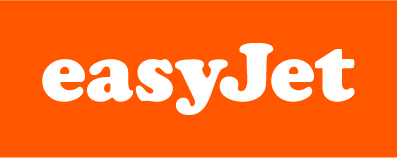Information
-
Document No.
-
Audit Title
-
Client / Site
-
Conducted on
-
Prepared by
-
Assessor Name
-
Location
-
Dispatcher
-
Parking Stand Number
-
Flight Number
-
Departure Station
-
Arrival Station
-
First Wave
-
Turnaround
-
Arrival
-
Aircraft Reg.
-
Aircraft Type
-
Proper hearing protection is used by all employees
-
Proper safety footwear is worn by all employees
-
High visibility /reflective clothing is worn
-
An FOD inspection has been made, FOD removed and property disposed
-
All equipment is positioned outside aircraft clearance lines
-
The gate area is clear
-
The bridge is fully retracted. If driveable type it is parked within its "Ramp Box"
-
The bridge operator makes a visual check for clearance and the area beneath and within the travel of the boarding bridge is clear
-
The gate and bridge areas are ready for arrival
-
The bridge operator uses hearing protection
-
There are not any obstructions present in the bridge
-
Fall protection devices (doors/barriers) are utilized on the bridge
-
The proper hand signals are used by marshaller, if marshaller is used
-
Wands are used for marshalling and all signaling (illuminated in low Visibility)
-
Aircraft chocks are property installed according to airline procedures
-
The grounding cable is connected to grounding point on Nose Leg (where available)
-
Personnel wait until the aircraft has stopped, is chocked, anti-collision light off, engines shut down and "Thumb up" given by marshaller before approaching
-
Wingtip/engine cones are properly positioned according to airine procedures
-
The bridge operator is alert to devices on the fuselage
-
Bridge warning devices operate (beacon, bell, etc.)
-
The bridge auto levelling system is deployed and operating
-
The boarding bridge is properly lighted
-
The bridge is properly aligned to the aircraft
-
The weather canopy is deployed to the aircraft
-
Employees observe ramp safety rules (no horseplay, no smoking, etc.)
-
Employees adhere to the no seat, "no ride rule"
-
Employees walk rather than run on the ramp
-
Local speed limits are observed by all drivers
-
Roadways are used by equipment operators
-
A guide-person is used when positioning equipment in confined areas
-
A guide-person is used when backing equipment to the aircraft
-
A guide-person is used when positioning high-reach trucks
-
After positioning elevated units to the aircraft, stabilizers are immediately deployed
-
All vehicles make a stop for a brake check at the distance from the aircraft required by the airline
-
The areas around cargo/passenger doors are visually checked for existing damage (dents, scratches, etc.) before ground equipment approaches
-
Personnel check clearances when opening cargo/passenger doors
-
Cargo/passenger doors are opened and secured properly by authorized personnel using required signals
-
When mobile passenger steps are used, they are property positioned to the aircraft. Stabilizers are deployed
-
Personnel refrain from "Horseplay"
-
The beltloader is in the full down position with handrail stowed when approaching the aircraft, when possible
-
The beltloader front bumper is positioned below and away from the cargo door sill
-
The beltoader handrall is raised when up to a wide body aircraft
-
Employees refrain from walking, standing or sitting on a moving conveyor belt
-
Safety rails on wide body loaders are down upon approach to aircraft
-
Loader guardrails are installed for off/on load and stowed when cargo door is closed
-
Employees use the ladder rather than riding up or down the loader platform
-
Brakes are set on vehides
-
Where equipped, chocks are used on vehides
-
When carts/dollies are dropped off, the tractor comes to a complete stop, the hand brake is engaged and the diver dismounts to engage the brakes
-
The operator's arms and legs are with in the profile of vehide at all times when moving
-
Employees use correct body mechanics when loading/unloading or lifting
-
Baggage is properly handled
-
All container/cart doors or curtains are closed and fastened after loading
-
Baggage tractor hood/fender/seat or top of containers are free of baggage/cargo/mail
-
All employees avoid driving equipment under the aircraft wing and fuselage
-
Employees wear protective gloves when servicing lavatories
-
The plug (donut) is properly installed and all access panels secured when lavatory servicing is finished
Additional comments please comment below:
-
undefined
Summary
-
undefined
-
Add signature
-
Report has been forward to
- GHP Station Manager
- easyJet Responsible AOCM














